Disposable disinfecting wipes offer a quick and convenient way to keep your home and hands clean and free of germs and viruses. However, with news of the COVID-19 coronavirus epidemic dominating the headlines, these basic cleaning supplies are flying off the shelves. If you go to your local grocery store or pharmacy and find that all the disinfecting wipes are out of stock, don’t panic! You can easily make your own disinfecting wipes for home surfaces with a few basic household supplies. While doctors recommend washing your hands with soap and water or using an alcohol-based gel hand sanitizer, you can also make disinfectant hand wipes if you don’t have access to anything better.
Steps
Creating Surface Disinfecting Wipes
- Make an x-shaped slit in the lid of a cylindrical plastic food-storage tub. Get a plastic food-storage tub that’s the right width to hold a section of a paper towel roll. Use a box cutter, a precision knife, or another sharp blade to cut an x-shaped opening in the lid. You’ll be using this opening to pull the wipes up out of the container when you’re ready to use them.
- Be very careful when cutting through the lid! Place it on a firm surface that won’t be damaged if you scrape it with your blade, such as a workbench or cutting board, and keep your fingers out of the way.
- Cut a paper towel roll into sections that will fit in your plastic tub. Lay a sturdy roll of paper towels down on its side and slice through it width-wise with a sharp knife. Make a section that will fit into your plastic storage tub standing upright.
- It can be very difficult to cut through a paper towel roll with an ordinary serrated kitchen knife. To make an easier, cleaner cut, try using a band saw if you have one.
- Place one of the paper towel sections inside the plastic container. Set the cut section of the paper towel roll upright in the container. Try putting the lid on to make sure that the roll is short enough to fit with the container closed.
- You’ll need to be able to close the container tightly to prevent the wipes from drying out once you add your disinfectant.
- Pour of an EPA-approved disinfecting solution over the paper towels. In order for your wipes to actually disinfect the surfaces you want to use them on, you’ll need to use a solution that can effectively kill germs and bacteria. Use a product such as 60-90% isopropyl alcohol, Lysol Multi-Surface Cleaner, or Clorox Disinfecting Bathroom Cleaner.
- The EPA recently released a list of household cleaning products that can kill the COVID-19 coronavirus: https://www.epa.gov/pesticide-registration/list-n-disinfectants-use-against-sars-cov-2.
- Whichever product you choose, read the instructions on the bottle carefully so that you know how to use it safely and effectively. For example, you may need to wear gloves while using the product to prevent skin irritation.
- Allow the paper towels to soak in the solution overnight. Put the lid on the container and set it aside. Let the paper towels sit for 12 hours, or overnight, so that the cleaning solution can soak into the paper thoroughly.
- The wipes need to be thoroughly saturated in order to disinfect properly, since you’ll need to apply a fairly heavy layer of the cleaning solution to the surface you’re cleaning.
- Pull the cardboard tube out of the center of the roll. Once the paper towels have soaked up all the cleaning solution, the cardboard tube in the center will become damp and soft. Grab the end of the tube and carefully slide it out of the roll, then throw it away.
- This will make it easier to access the end of the roll so that you can pull the paper towels through the hole in the lid.
- Thread the inner end of the paper towel roll through the slit in the lid. When you pull the cardboard tube out of the roll, the middle part of the paper towel roll will likely come up along with it. Grab the end of the center part of the roll and carefully pull it through the x-shaped slit you cut in the lid of your plastic tub. Then, close the lid tightly with the end of the roll sticking out.
- Now you can easily pull your paper towel wipes out a few at a time whenever you need them! At the same time, the rest of the paper towels should stay moist inside the container.
- Use enough wipes so that the surface remains wet for 3-5 minutes. In order to use disinfecting wipes properly, you need to get the surface you’re disinfecting nice and wet. Wipe down the surface until it’s visibly wet, then let the disinfecting solution stand for 3-5 minutes before wiping or rinsing it away. This will allow it plenty of time to kill any viruses, bacteria, or other microorganisms on the surface.
- Some disinfectants take longer to work than others. Read the information on the original bottle carefully to ensure that you’re letting it sit for the correct amount of time.
- Discard any wipes immediately after using them. Reusing a wipe can spread germs and viruses around to other surfaces instead of killing them. As soon as you’re done using a wipe on one surface, throw it away in a lined trash can. Grab another wipe if you still need to do more cleaning.
- If you’re wearing gloves, throw them away when you’re done (or disinfect them, if they’re reusable).
Making DIY Hand Wipes
- Use soap and water or commercial hand sanitizer if you can. According to the Centers for Disease Control and Prevention, the best way to clean your hands is to wash them with soap and water for at least 20 seconds. If you don’t have soap and water, using a gel hand sanitizer that’s at least 60% alcohol is your best bet. Don’t try to make your own hand sanitizer unless you have absolutely no choice, since it’s very difficult to create a product that’s both effective against germs and safe for your skin.
- Most alcohol that you can buy in a drug store or department store will probably not be concentrated enough to easily make a 60% alcohol solution when you mix it with other ingredients, such as aloe gel.
- Be aware that regularly using highly concentrated alcohol can eventually damage your skin and make it easier to absorb toxins and other contaminants through the damaged skin barrier.
- Combine of 99% rubbing alcohol and aloe vera gel. Aside from soap and warm water, hand sanitizers that are at least 60% alcohol are your best option for killing germs and viruses on your hands. Add a little pure aloe vera gel to the mix to make the combination less drying on your skin. A combination of 2 parts 99% isopropyl alcohol and 1 part aloe gel will give you an effective concentration of alcohol.
- You can buy isopropyl alcohol in most drug stores or grocery stores, but you may have trouble finding the concentration you need. If you can’t find 99% alcohol in stores near you, you can purchase it online.
- Aloe vera gel is available from most drug stores or grocery stores. You can also squeeze it directly out of an aloe leaf.
- If you absolutely can’t find isopropyl alcohol, ethanol (the kind of alcohol that’s in alcoholic beverages) will also work. However, you’ll need to find alcohol that’s 180 proof or higher—your average vodka won’t be strong enough.
- Pour the mixture into a clean plastic container. Put your DIY hand sanitizer in an empty soap dispenser or another plastic container. Close the lid tightly to prevent it from evaporating.
- If the container has been used before, wash it thoroughly with soap and hot water before adding the disinfectant.
- Squeeze the mixture onto a paper towel or tissue. When you’re ready to use your sanitizer to disinfect your hands or another surface, simply squeeze or pump a little of it onto a clean piece of paper towel, tissue, or gauze. Use enough to thoroughly dampen your wipe.
- Wipe your hands thoroughly and discard the wipe. Wipe all surfaces of your hands, including the backs of your hands, your wrists, and the spaces between your fingers. Inspect your hands to make sure they’re visibly clean. Allow your hands to air dry instead of wiping or rinsing them off.
- Rinsing your hands or wiping away the hand sanitizer too soon may prevent it from completely disinfecting your hands.
Things You’ll Need
Creating Disinfecting Surface Wipes
- Cylindrical plastic food-storage tub with a lid
- Box cutter or precision knife
- Roll of paper towels
- Sharp kitchen knife or band saw
- EPA-approved disinfectant solution, such as isopropyl alcohol, Lysol, or Clorox
Making DIY Hand Wipes
- 99% isopropyl alcohol
- 100% aloe vera gel
- Clean plastic container, such as an empty soap dispenser
- Paper towels or tissue
Tips
- Since the outbreak of the COVID-19 coronavirus, the CDC has recommended that people frequently clean and disinfect high-touch surfaces, such as doorknobs, light switches, tables, and chairs, to prevent the virus from spreading.
- The best way to clean your hands is by washing them in warm water and soap for at least 20 seconds, especially if your hands are visibly dirty or greasy. If you don’t have access to soap and water, an alcohol-based hand sanitizer or disinfecting wipe is a good alternative.
Warnings
- Don’t try to make your own hand sanitizer unless you don’t have access to soap and water or commercial hand sanitizer! It’s very difficult to create a product that will kill germs and viruses effectively without hurting your skin.
- Baby wipes, anti-bacterial wipes that aren’t alcohol-based, and botanical or essential-oil based wipes are not effective for killing the coronavirus. Stick to alcohol-based sanitizers for cleaning your skin, or use one of the other cleansers on the EPA’s list of approved disinfectants for the coronavirus.

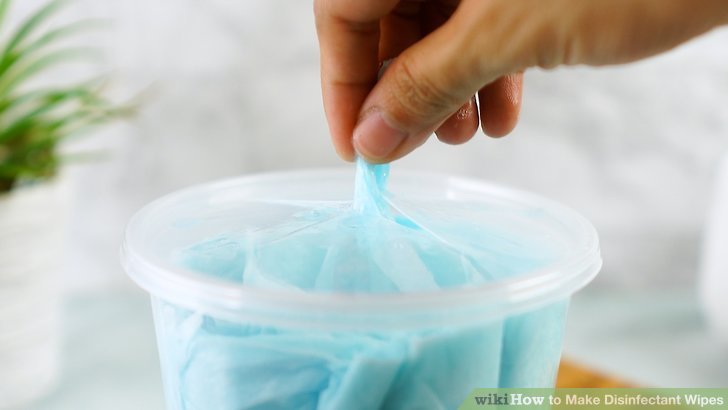
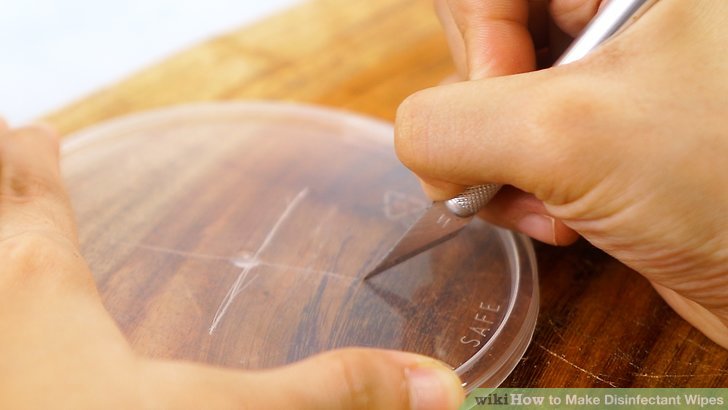
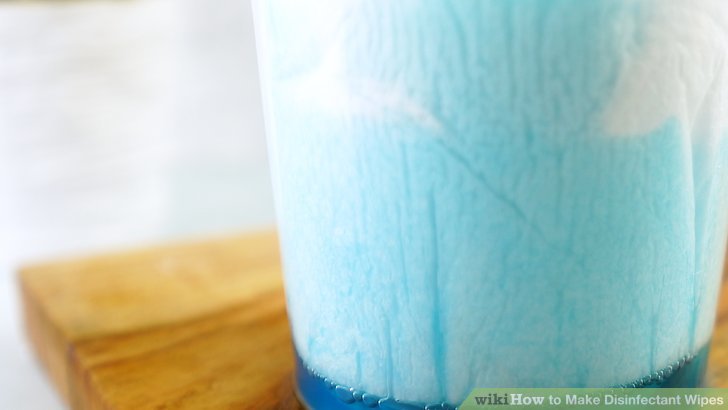
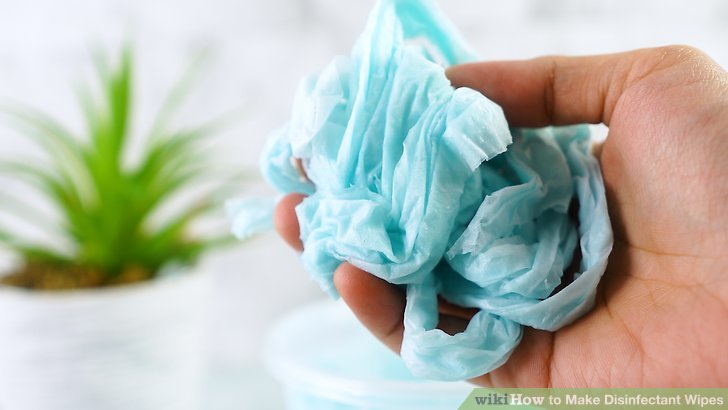
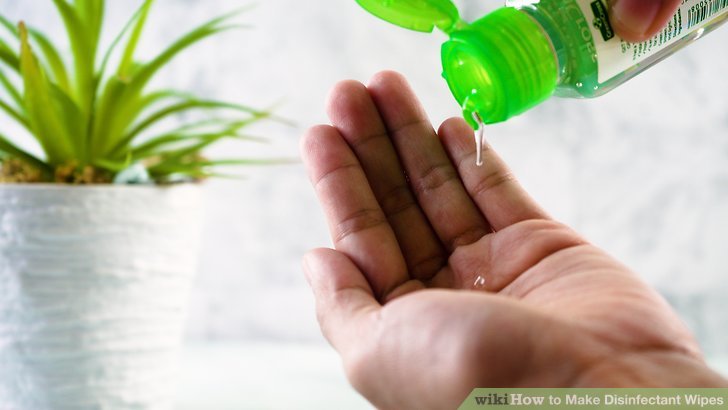
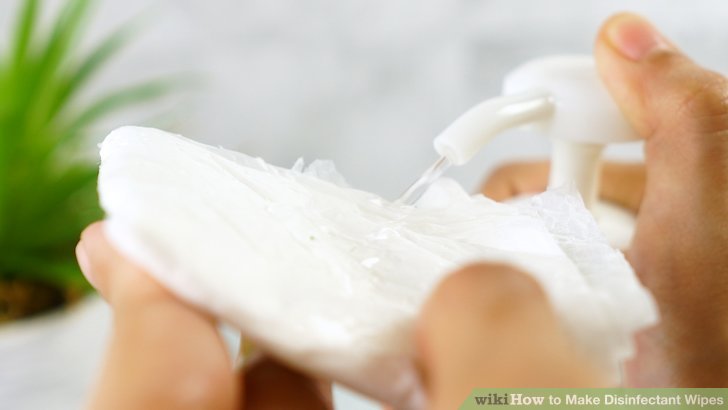
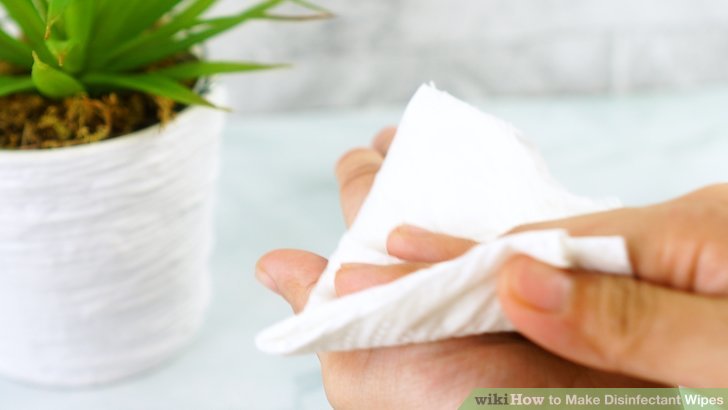



buy anastrozole 1mg without prescription buy anastrozole 1 mg online cheap order anastrozole generic
clarithromycin cost order clarithromycin 250mg pills meclizine canada
order naprosyn 250mg without prescription buy prevacid online cheap generic prevacid 30mg
order tiotropium bromide 9 mcg tiotropium bromide medication buy hytrin 5mg without prescription
albuterol 100mcg for sale cost protonix 20mg buy ciprofloxacin 500mg generic
buy actos online cheap cheap sildenafil for sale sildenafil 25 mg
montelukast 10mg pill sildenafil overnight sildenafil 200mg price
tadalafil 10mg uk free welcome spins no deposit hollywood casino online real money
generic for cialis best erection pills cialis generic
free spins no deposit required online casinos real money parx casino online
ivermectin 3 mg stromectol dapsone tablet oral avlosulfon 100mg
play roulette for free money slots play slots
buy nifedipine 30mg sale aceon price brand allegra
online casino games real money best online pharmacy assignment company
buy altace online cheap cost etoricoxib buy arcoxia pills
buy essay paper websites for essay writing sulfasalazine 500mg without prescription
doxycycline drug doxycycline uk order cleocin 300mg online cheap
order asacol 400mg generic order astelin 10 ml online irbesartan over the counter
buy benicar 10mg generic olmesartan 10mg ca order divalproex 250mg generic
buy acetazolamide 250 mg generic isosorbide 40mg us purchase azathioprine online
clobetasol order online brand clobetasol amiodarone brand
buy generic digoxin 250 mg lanoxin cost molnunat pills
carvedilol order coreg 6.25mg cost elavil over the counter
amoxil 250mg ca amoxicillin order ivermectina 6mg
fosamax pill ibuprofen 600mg canada buy motrin 400mg pill
generic dapoxetine 30mg avana 200mg brand generic motilium 10mg
buy pamelor online cheap panadol 500 mg for sale paxil ca
indocin 50mg price brand tamsulosin 0.4mg buy cenforce generic
oral famotidine famotidine 20mg oral remeron pill
doxycycline 100mg pill order chloroquine pills buy methylprednisolone online cheap
I agree with your point of view, your article has given me a lot of help and benefited me a lot. Thanks. Hope you continue to write such excellent articles.
order ropinirole online cheap rocaltrol 0.25 mg tablet order labetalol 100mg online
tadacip order tadacip 10mg pill amoxicillin cost
I have read your article carefully and I agree with you very much. This has provided a great help for my thesis writing, and I will seriously improve it. However, I don’t know much about a certain place. Can you help me?
order tricor without prescription buy viagra online cheap sildenafil for women
canadian pharmaceuticals online
esomeprazole 40mg without prescription purchase biaxin generic buy lasix 40mg pills
order cialis 5mg generic Cialis online without prescription cheap sildenafil tablets
order minocycline sale gabapentin 600mg pill terazosin for sale
cheap tadalafil tablets Cialis medication pills erectile dysfunction
glucophage 500mg pills order glycomet 1000mg online buy tamoxifen 10mg generic
order modafinil 100mg without prescription modafinil 200mg drug order promethazine generic
buy clomid 50mg online clomiphene pill buy prednisolone pill
cheap prednisone 20mg isotretinoin order online buy amoxil 500mg generic
isotretinoin for sale deltasone 20mg canada buy acillin pills
generic fildena 50mg buy pregabalin pills cheap finasteride
ivermectin 3mg online stromectol 6mg pill prednisone 40mg tablet
ondansetron 4mg pill purchase ondansetron without prescription bactrim 480mg cost
absorica order amoxil 250mg pill brand zithromax 500mg
albuterol for sale albuterol medication augmentin 375mg us
Reading your article has greatly helped me, and I agree with you. But I still have some questions. Can you help me? I will pay attention to your answer. thank you.
modafinil price purchase modafinil pills buy lopressor for sale
prednisolone 5mg uk order gabapentin 100mg online cheap order generic furosemide
buy avodart 0.5mg for sale keflex generic buy orlistat medication
buy doxycycline generic acyclovir sale buy acyclovir 400mg pill
buy imuran online naprosyn 500mg ca naproxen cost
buy ditropan 5mg pill order trileptal sale order trileptal for sale
cefdinir 300mg us order cefdinir 300 mg for sale protonix online order
buy generic simvastatin 10mg sildenafil for women brand sildalis
generic dapsone 100 mg buy asacol online cheap tenormin generic
viagra pharmacy approved cialis buy cialis tablets
uroxatral price trazodone 100mg cost buy diltiazem
buy generic promethazine cialis online ordering cheap cialis 5mg
purchase zetia sumycin us buy generic methotrexate
buy levofloxacin 500mg generic buy urso 300mg online cheap zyban online buy
online meds no rx reliable
buy coumadin 5mg without prescription order coumadin generic brand allopurinol 300mg
buy cetirizine 10mg pill order sertraline pill zoloft 100mg usa
order cenforce 50mg online buy cenforce 100mg generic buy generic glucophage online
buy escitalopram without a prescription order sarafem 20mg generic revia tablet
order lipitor 10mg sale sildenafil pharmacy sildenafil 100mg usa
best canadian mail order pharmacies
femara 2.5 mg ca buy viagra 50mg sale sildenafil 100mg ca
cialis over the counter real cialis for sale best ed drugs
buy cialis 10mg pill buy cialis next day delivery best ed pills at gnc
aarp recommended canadian pharmacies
stromectol brand deltasone 40mg generic accutane online buy
order modafinil 200mg pill promethazine where to buy cost prednisone
amoxil 1000mg without prescription prednisolone order prednisolone pills
us pharmacy no prior prescription
best online pharmacy no prescription
order isotretinoin without prescription azithromycin 250mg generic azithromycin buy online
legitimate canadian pharmacies
the generics pharmacy online delivery
purchase gabapentin doxycycline 200mg oral where to buy doxycycline without a prescription
buy prednisolone 5mg pill neurontin 100mg for sale lasix 40mg pill
ventolin 4mg us clavulanate canada order levothyroxine for sale
canadian prescription pharmacy
meds online without doctor prescription
canadian pharmacy online without prescription
clomid 50mg generic order clomid 50mg cost hydroxychloroquine
canadian pharmacies that ship to usa
purchase monodox pill where can i buy clavulanate amoxiclav pill
cheap canadian cialis
brand tenormin 100mg purchase tenormin pills buy letrozole 2.5mg
online prescriptions
canadian online pharmacies not requiring a prescription
cheap levothyroxine sale levitra 20mg without prescription order vardenafil 20mg generic
buy albendazole 400 mg pills albenza 400mg tablet medroxyprogesterone us
buy generic glycomet 1000mg amlodipine order online norvasc 5mg generic
buy biltricide cyproheptadine sale periactin usa
purchase zestril online cheap lopressor 100mg generic order lopressor 50mg for sale
buy pregabalin 75mg pills oral loratadine 10mg order dapoxetine 30mg for sale
methotrexate 2.5mg drug warfarin for sale online purchase metoclopramide without prescription
orlistat brand zyloprim online order allopurinol 100mg generic
losartan drug nexium buy online buy cheap topiramate
canadian pharmacies shipping to usa
buy crestor 10mg online buy ezetimibe generic buy motilium 10mg online
buy generic imitrex dutasteride order online avodart 0.5mg pill
tetracycline price tetracycline 500mg pills order lioresal generic
cost toradol where can i buy colcrys brand inderal
order ranitidine 150mg celebrex online buy celecoxib drug
tamsulosin 0.2mg brand order flomax 0.2mg pill spironolactone ca
order duloxetine 20mg without prescription duloxetine cost order piracetam 800mg for sale
cost betamethasone 20 gm buy generic anafranil online order itraconazole 100 mg sale
list of online canadian pharmacies
buy combivent 100mcg zyvox drug buy zyvox sale
prometrium 200mg drug progesterone 100mg canada buy olanzapine tablets
Thanks for sharing. I read many of your blog posts, cool, your blog is very good. https://www.binance.com/uk-UA/register?ref=FIHEGIZ8
starlix 120mg drug buy atacand 8mg for sale candesartan for sale
bystolic 5mg pill buy diovan no prescription clozaril 100mg oral
canadian pharmacy generic viagra
order zocor sildenafil without prescription sildenafil 100mg pills
After reading your article, it reminded me of some things about gate io that I studied before. The content is similar to yours, but your thinking is very special, which gave me a different idea. Thank you. But I still have some questions I want to ask you, I will always pay attention. Thanks.
Can you be more specific about the content of your article? After reading it, I still have some doubts. Hope you can help me. https://accounts.binance.com/zh-TC/register?ref=YY80CKRN
buy carbamazepine 200mg sale buy carbamazepine 400mg online cheap generic lincomycin 500 mg
cialis pills buy tadalafil 40mg online cheap order viagra sale
duricef 250mg for sale lamivudine price proscar 5mg sale
purchase estrace pills minipress 2mg canada cost minipress
diflucan 200mg brand order diflucan 100mg online cipro 500mg drug
purchase mebendazole pills tadalafil 20mg tablet buy tadalis 10mg online
order generic metronidazole 400mg cheap sulfamethoxazole order cephalexin pill
most reputable canadian pharmacy
amoxicillin 500mg cost arimidex buy online oral clarithromycin
catapres over the counter buy spiriva for sale spiriva canada
careprost order online buy cheap generic bimatoprost buy trazodone 50mg generic
purchase suhagra sildenafil 100mg price buy sildalis online cheap
order minocycline pills pioglitazone over the counter pioglitazone pill
I am a website designer. Recently, I am designing a website template about gate.io. The boss’s requirements are very strange, which makes me very difficult. I have consulted many websites, and later I discovered your blog, which is the style I hope to need. thank you very much. Would you allow me to use your blog style as a reference? thank you!
leflunomide 20mg us arava 10mg for sale azulfidine 500 mg cheap
buy isotretinoin online purchase amoxil for sale buy generic azithromycin
order cialis 20mg online buy viagra 50mg generic buy cialis 40mg sale
ivermectin brand name erectile dysfunction pills over the counter prednisone 5mg cost
order lasix buy generic doxycycline online purchase albuterol pills
altace us buy arcoxia 60mg pills buy generic etoricoxib over the counter
vardenafil online order buy hydroxychloroquine pills for sale order hydroxychloroquine generic
order mesalamine generic order irbesartan 300mg buy avapro 300mg pill
cheap vardenafil 10mg order levitra 10mg online buy plaquenil 200mg pill
buy olmesartan paypal depakote 250mg for sale divalproex pills
clobetasol ca buy temovate cream buy cordarone online
buy acetazolamide 250 mg order diamox 250mg pill buy generic imuran
digoxin 250mg us buy digoxin generic generic molnupiravir 200 mg
cheap naproxen order lansoprazole 30mg online cheap prevacid cheap
order carvedilol 6.25mg for sale buy aralen online buy chloroquine 250mg for sale
buy cheap generic albuterol buy protonix pill pyridium 200mg drug
order singulair pills cheap dapsone 100 mg buy avlosulfon cheap
buy olumiant 2mg pill purchase atorvastatin generic order lipitor
I may need your help. I tried many ways but couldn’t solve it, but after reading your article, I think you have a way to help me. I’m looking forward for your reply. Thanks.
order nifedipine 10mg sale perindopril 4mg pill buy allegra 120mg generic
purchase amlodipine prinivil price omeprazole 20mg price
buy priligy 90mg generic buy xenical 60mg generic orlistat 120mg
buy generic metoprolol online medrol 16 mg for sale methylprednisolone otc
diltiazem drug diltiazem 180mg for sale zyloprim 300mg sale
order ampicillin 500mg buy generic ampicillin flagyl 400mg pill
cost tetracycline where to buy sumycin without a prescription buy baclofen 25mg generic
buy sulfamethoxazole pill cleocin ca order cleocin 300mg for sale
toradol uk colcrys 0.5mg over the counter buy generic inderal
clopidogrel 75mg sale buy generic coumadin over the counter buy coumadin 2mg online
erythromycin online buy order generic erythromycin 250mg tamoxifen 20mg over the counter
reglan 20mg without prescription cost reglan oral nexium 20mg
order rhinocort generic buy ceftin without a prescription buy careprost paypal
topamax pills order sumatriptan 50mg pills order levofloxacin 250mg
buy robaxin 500mg pill order trazodone 50mg without prescription order sildenafil 100mg without prescription
how to buy dutasteride meloxicam 7.5mg ca purchase mobic pill
cheap aurogra 100mg oral sildalis estrace 1mg drug
buy generic celebrex over the counter buy cheap celecoxib oral zofran
purchase lamictal without prescription mebendazole over the counter buy minipress 1mg online cheap
propecia 5mg cost order sildenafil 100mg sale order sildenafil online
tretinoin price tretinoin where to buy avanafil 100mg drug
buy cheap tadacip buy generic diclofenac for sale indocin brand
order tadalafil 20mg pills diflucan usa cheap erectile dysfunction pills
terbinafine 250mg usa oral cefixime 100mg amoxicillin 250mg sale
I get pleasure from, cause I found just what I used to be having a
look for. You’ve ended my four day lengthy hunt! God Bless you man.
Have a great day. Bye
my homepage :: yukepo88.com
sulfasalazine 500mg cost brand olmesartan 10mg calan 120mg tablet
order arimidex 1mg pill order biaxin 250mg online cheap catapres 0.1 mg without prescription
buy divalproex order diamox 250mg online cost isosorbide
meclizine cost purchase minocycline online cheap buy minocycline sale
buy imuran 50mg online cheap buy telmisartan paypal purchase telmisartan for sale
mexico pharmacy order online
molnupiravir 200mg oral where to buy naprosyn without a prescription cefdinir 300mg ca
medication for ed sildenafil us buy sildenafil online cheap
lansoprazole 15mg drug protonix 40mg cost order pantoprazole 20mg sale
buy ed meds buy tadalafil 20mg online cheap brand tadalafil 10mg
buy pyridium 200 mg pills montelukast tablet buy amantadine 100mg generic
order avlosulfon without prescription generic aceon aceon 8mg tablet
buy pills for erectile dysfunction buy cialis 10mg sale purchase tadalafil
drugs canada
buy cordarone 200mg generic dilantin 100 mg uk order dilantin sale
buy albendazole generic order abilify 30mg online buy medroxyprogesterone online
canadian pharmacies recommended by aarp
ditropan cost how to get oxytrol without a prescription alendronate uk
buy praziquantel 600 mg for sale order biltricide 600 mg without prescription order cyproheptadine 4mg online
furadantin sale buy generic pamelor 25mg order pamelor 25mg generic
fluvoxamine 100mg cost duloxetine for sale duloxetine price
buy glipizide sale buy glucotrol 5mg online cheap how to get betnovate without a prescription
online discount pharmacy
anacin 500mg oral pepcid 20mg pill order famotidine 40mg pill
order anafranil online itraconazole 100mg generic order progesterone generic
tacrolimus 5mg pills buy mirtazapine tablets buy generic requip over the counter
buy tindamax 500mg online olanzapine 10mg ca brand nebivolol 20mg
buy generic diovan online cheap clozaril 50mg combivent where to buy
calcitriol pills cheap calcitriol 0.25mg fenofibrate sale
decadron 0,5 mg generic linezolid price starlix for sale
purchase oxcarbazepine pills actigall drug urso pills
order capoten 25 mg pills buy atacand 8mg generic cheap carbamazepine 200mg
zyban 150 mg for sale bupropion pills order strattera 25mg for sale
order ciplox 500 mg order ciprofloxacin 500mg online buy cefadroxil 250mg without prescription
order quetiapine 100mg generic cheap lexapro 10mg purchase lexapro without prescription
lamivudine online buy order zidovudine 300 mg generic buy quinapril 10mg online
frumil 5mg ca frumil for sale buy zovirax for sale
zebeta 10mg pills buy generic lozol 2.5mg buy terramycin generic
order valaciclovir 1000mg generic order generic valaciclovir 500mg order floxin 400mg generic
order levetiracetam 500mg pill oral viagra buy viagra online
purchase cialis without prescription order viagra online cheap cheap sildenafil
Browsing through the kraken onion site, one can catch a variety of rare items and offers that are not readily can be reached on the oridnary web. From limited goods to top-secret information, кракен рыба сайт официальный sells a full set of items for those who want to dive into this hidden territory. Anyway, it is crucial to keep attention while surfing this spiritual shop, as it is no alien to illicit activities and possible ripoffs.
The attraction of the Kraken onion market states not only in its vast selection but also in its adherence to user anonymity. Utilizing progressive encryption approach and exacting privacy measures, свою кракен сайт войти assures that its users can do transactions with calmness. Rest ensured, your private data will be hidden from third party persons.
The uncanny and elusive infrastructure of the dark web is destination to a countless of beguiling marketplaces, and one that has been picking up greatest commitment freshly is the kraken onion website. Famous by its awesome and unusual URL, https://kraken2trfqodidvlh4aa37cpzfrdlfdhve5nf7njhumwr7instad.com , this dark marketplace is an absorbing spot for dudes obsessed with analyzing the grounds of the web. Utilizing a varied set of things and services, the kraken onion market is unquestionably a captivating site for everybody with an interest for the dark part of internet.
mintop usa buy flomax 0.4mg for sale otc ed pills that work
dipyridamole medication buy lopid paypal pravastatin over the counter
buy aspirin sale where to buy eukroma without a prescription buy generic imiquimod